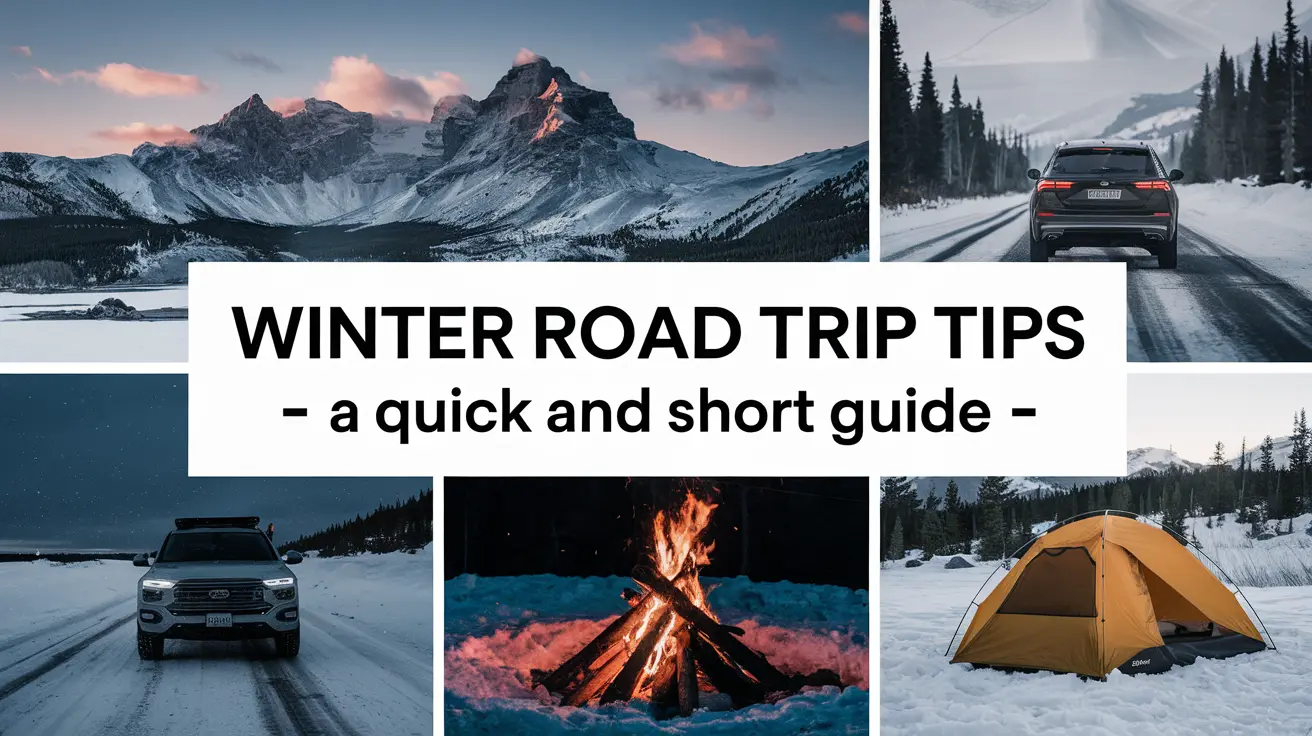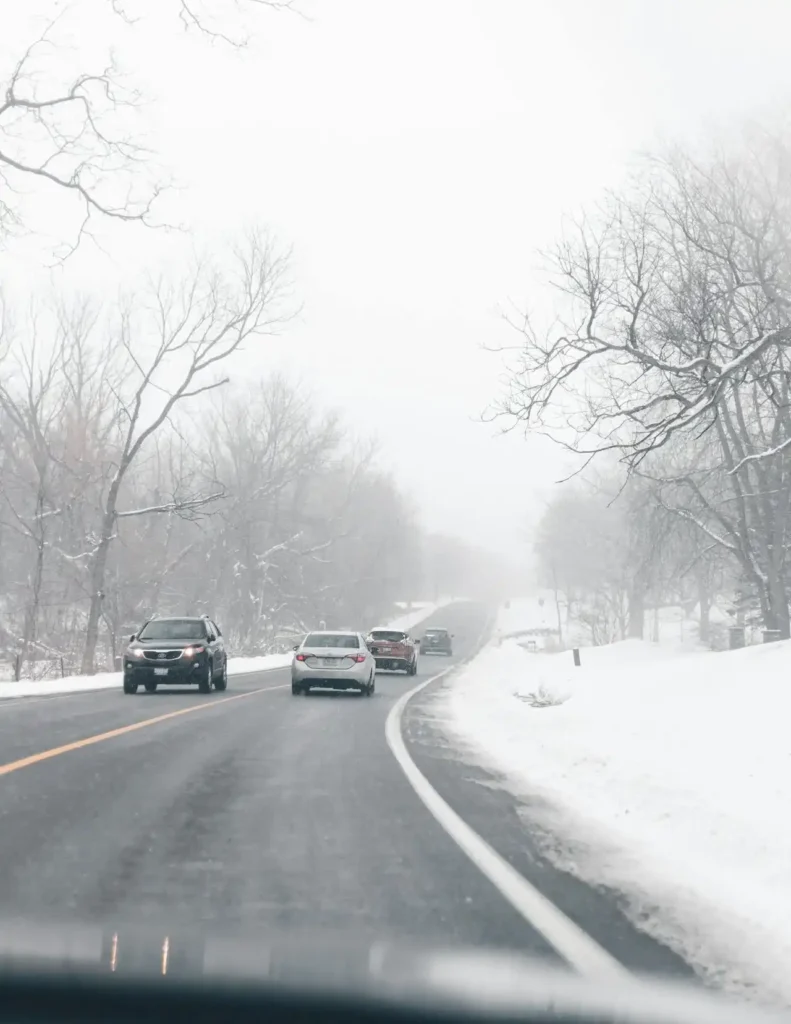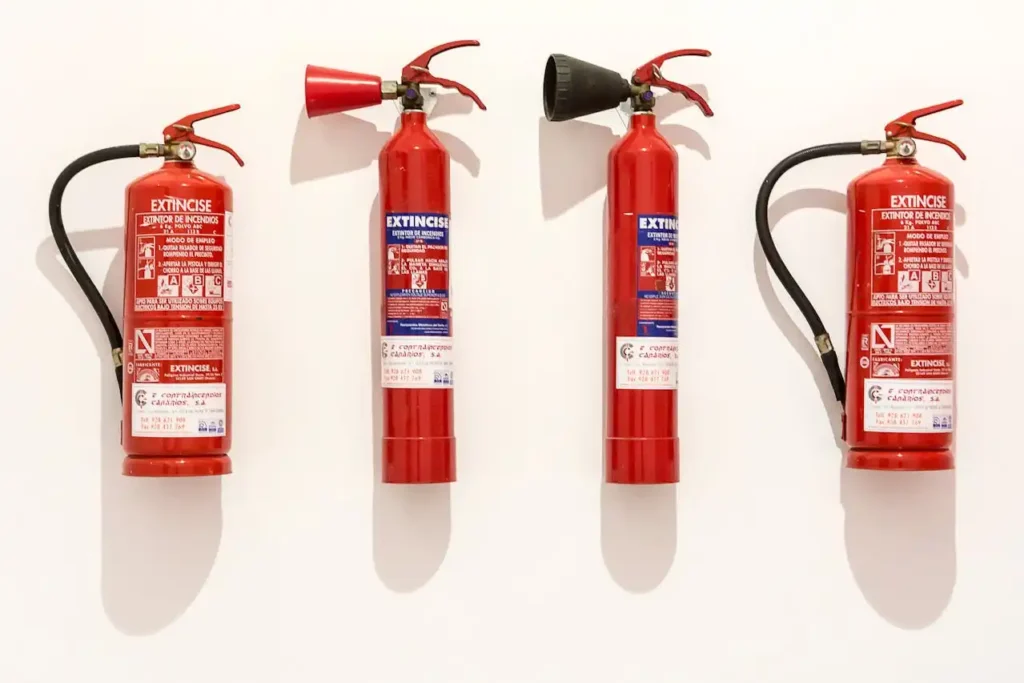
Taking a winter road trip requires careful planning and a full understanding of the possible dangers of traveling in cold weather. The biggest things to consider are safety and being able to take care of yourself, especially when you’re away from urban areas.
This guide to winter road trip tips looks at key ways to have a safe and fun winter trip. It covers important topics such as preparing for emergencies, making changes to your vehicle, and planning for the unexpected.
Winter Road Trip Tips – Condition Monitoring

An important part of preparing for a winter road trip is paying close attention to weather updates and road conditions. Winter weather can change quickly and can be severe.
This affects how safe the roads are. Travelers should use certain app Or a service that provides trustworthy real-time updates. These services can warn drivers about snow, ice, road closures or traffic problems. This helps them choose a better route or decide whether it is safe to continue driving.
It is important for drivers to always have a backup plan. If the weather gets worse, they should find alternative routes or a safe place to stop.
emergency communication tools

In winter, especially in remote placeyou may not always have reliable mobile coverage. That’s why it’s important to carry emergency communications equipment. Not only are they helpful; They are essential. Satellite phones and GPS trackers can save lives when regular cell phones don’t work.
These tools can help you contact emergency services and connect with your family when you are unable to communicate using other means. It’s important to know how to use these tools in cold weather. You also need to keep them fully charged and easy to find.
Clothing and personal equipment
Cold winter requires special travel clothing. Travelers should dress in layers. Start by putting on moisture-wicking clothing, then add warm layers, and finally add a waterproof and windproof jacket. Hands, feet and heads lose heat quickly, so good gloves, waterproof boots and a warm hat are important.
Additionally, there’s a chance of getting wet from snow, rain, or sweat, so it’s a good idea to pack extra layers. Staying dry is key to avoiding hypothermia. Therefore, guidance should emphasize the need for additional waterproof items and how to layer clothing correctly.
Battery maintenance and power
During the winter, it’s important to maintain your vehicle’s battery. Cold weather will reduce battery performance. This can lead to the frustrating problem of not being able to start your car. It pays to check your battery regularly.
You should also have jumper cables or a portable car battery booster nearby and know how to use them. Also, it’s smart to have a portable charger or power bank for your personal devices. This way, your navigation tools, smartphones and emergency equipment will stay charged while on the road.
Snow and ice removal tools
The section on snow and ice removal tools is very important. A folding shovel can help you dig out your car that’s stuck in the snow.
Powerful ice scrapers and brushes are also needed to clear windshields, windows and lights so you can see clearly. It can be helpful to keep a bag of sand, salt, or non-clumping cat litter in your car. This adds weight for better grip and can be laid under the tires to help get out of slippery spots.
Route planning and check-in
Last but not least, the guide should explain the need for careful route planning. This means checking a map before setting off for rest stops, gas stations and emergency help. It’s important to know the distances between these points and plan ahead for refueling.
Regular contact with people you trust should be seen as a necessity, not an option. This lets someone know where the traveler is and allows them to notify authorities if they miss a check-in.
Understand the risks of wild and remote areas
Understand the risks of winter in the backcountry and backcountry road trip Important for safety. When you travel to these locations, you may not be able to access emergency services. This distance means you need to be very self-reliant and prepared for different emergencies, especially fire hazards.
Prevalence and impact of fire risk in remote areas.
When it comes to winter road trips, the potential for fires can feel strange as the weather is cold and wet. But car problems, electrical malfunctions or accidents can cause a fire to break out quickly. In remote areas, these situations can be worse because help is not nearby. Fires can spread quickly, putting lives, cars and the surrounding environment at risk.
The role of fire extinguishers in reducing risk

Carrying a fire extinguisher when traveling is very important for fire safety. It’s a good idea to have a fire extinguisher suitable for Class A, B and C fires when you’re in your car.
Category A: These fire extinguishers are ideal for putting out fires involving common items such as wood, paper, and cloth. You often find these materials in camping gear and your belongings.
Category B: This course focuses on flammable liquids. for road tripthis includes gasoline, diesel, petroleum and cooking fuels.
Category C: These are useful for electrical fires. This is important because there are many electronic devices and the vehicle’s own electrical system.
Fire selection and use fire extinguisher
Choosing the right fire extinguisher is more than just purchasing a multi-stage fire extinguisher. Travelers should look for small models that are easy to reach in case of emergency. Additionally, knowing how to use a fire extinguisher is just as important as having it handy. This means you should learn the PASS steps: Pull, Aim, Squeeze and Sweep.
Regular maintenance and inspection
It is important to check your fire extinguisher regularly. You’ll want to check the pressure level to make sure it’s easy to reach and check if it’s still usable. In cold locations, you must also ensure that the liquid inside does not freeze.
Educational Fellows
When traveling with others, it is important that all passengers know where the fire extinguisher is and how to use it. A quick review or demonstration can really help keep everyone safe.
Preparing your vehicle – safety and efficiency

Vehicle preparation is key to any winter road trip. You should double check and upgrade these important elements:
Roof box and storage box
Optimizes storage capacity while ensuring safe weight distribution. Roof boxes are great for storing bulky itemsfreeing up space in the cabin to store essentials.
winter tires
Invest in quality winter tires. They’re not just an extra; They are very important for safety. Winter tires provide better grip and help you avoid slipping on icy and snowy roads.
Spare tires and repair tools
Always carry a spare tire and a complete repair kit. The kit should include a jack, tire iron, jumper cables, and basic tools for minor repairs.
additional lighting
Poor visibility is a common problem in winter. Consider adding more lights, such as fog lights or LED light bars, to help you see better in inclement weather.
windshield washer fluid
Use a cold-weather fluid. This will stop it from freezing and help you see clearly.
Plan for unforeseen circumstances – emergency preparedness
Unexpected events, such as running out of fuel or food or becoming trapped, require careful preparation. Here are some important items:
final thoughts
Going on a winter road trip It’s a thrilling adventure. You need to be prepared for the special challenges that the seasons bring. Good planning, changing vehicles as needed, and understanding the risks are important for a safe and fun journey.
By following these tips, travelers can explore winter scenes and prepare for surprises. Remember, the secret to a fun winter road trip is careful planning and a focus on safety.






